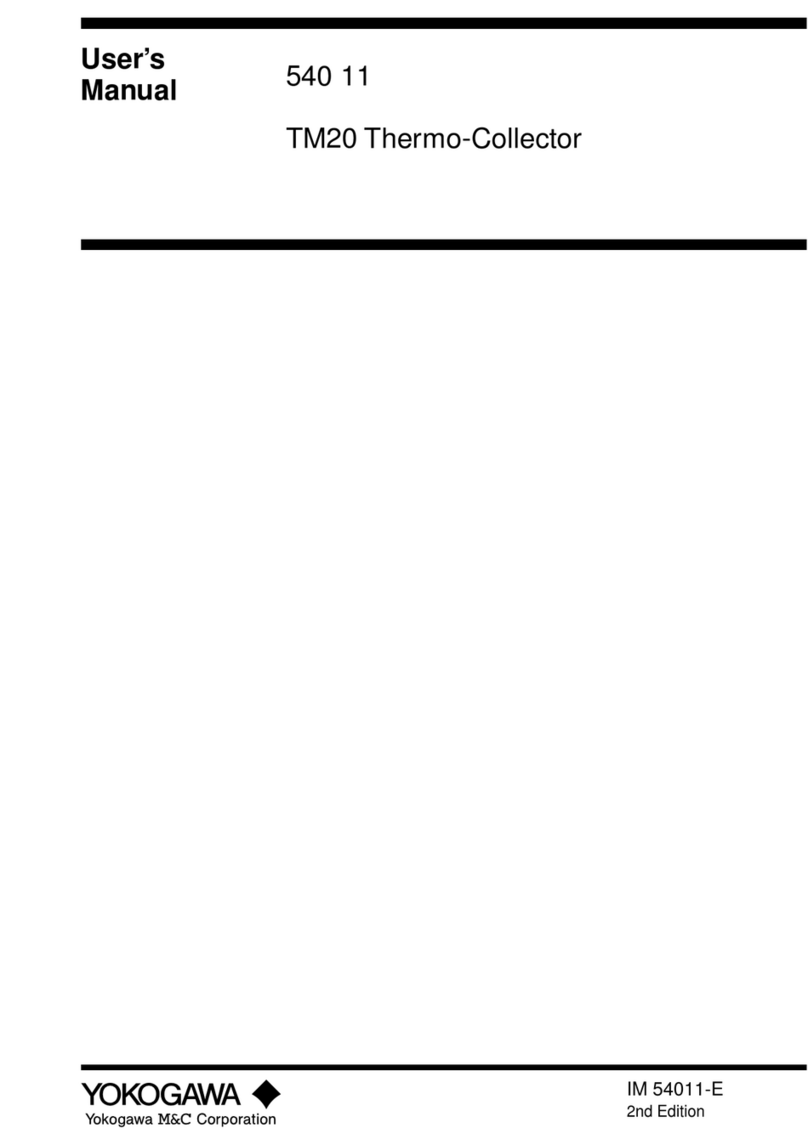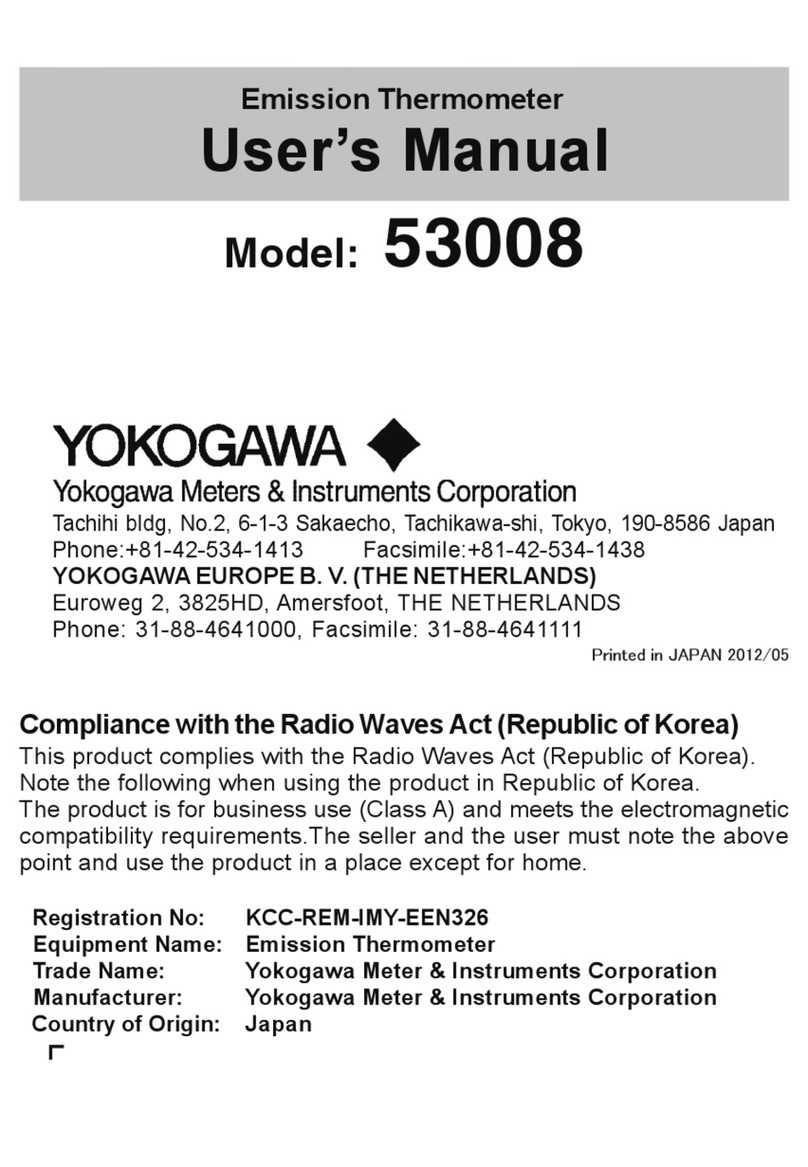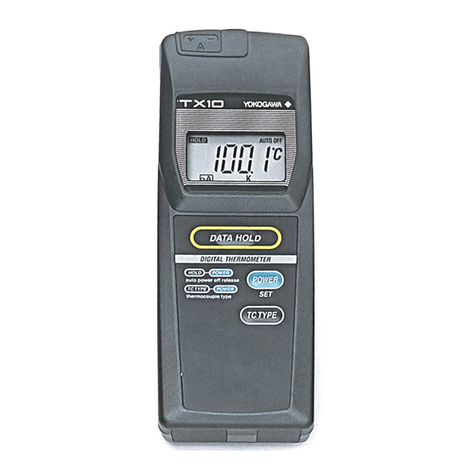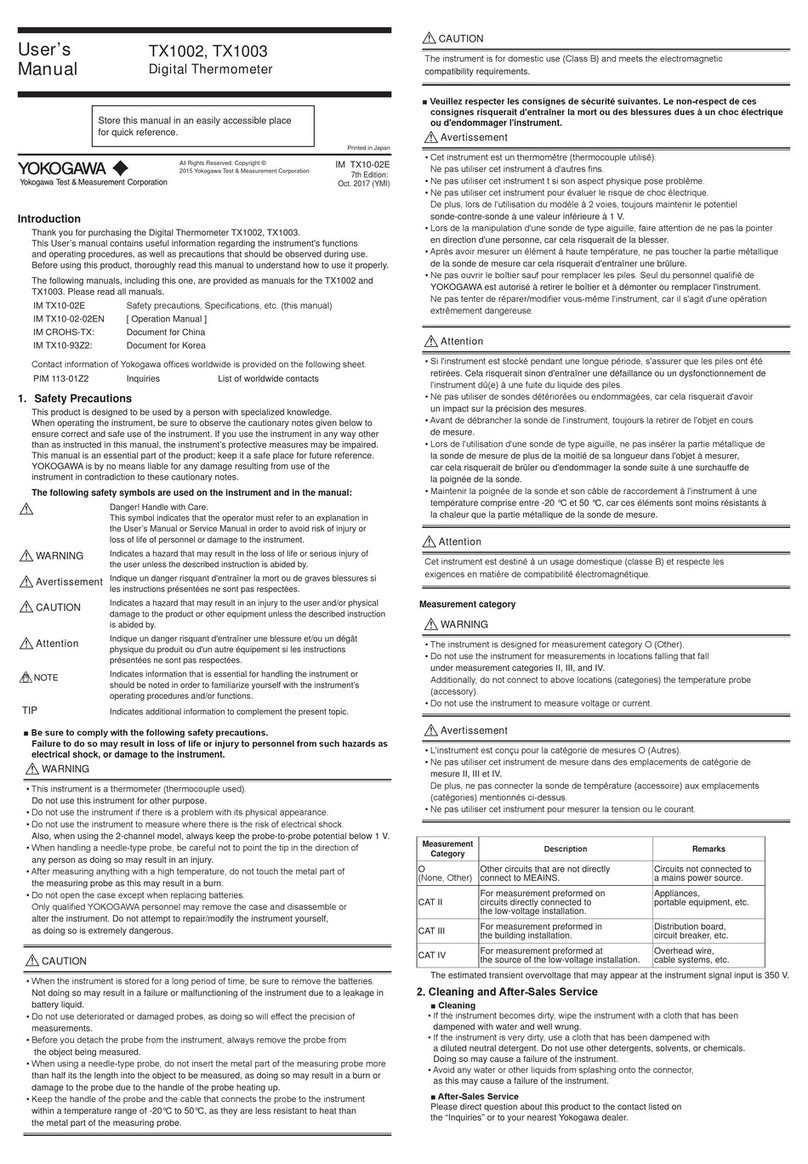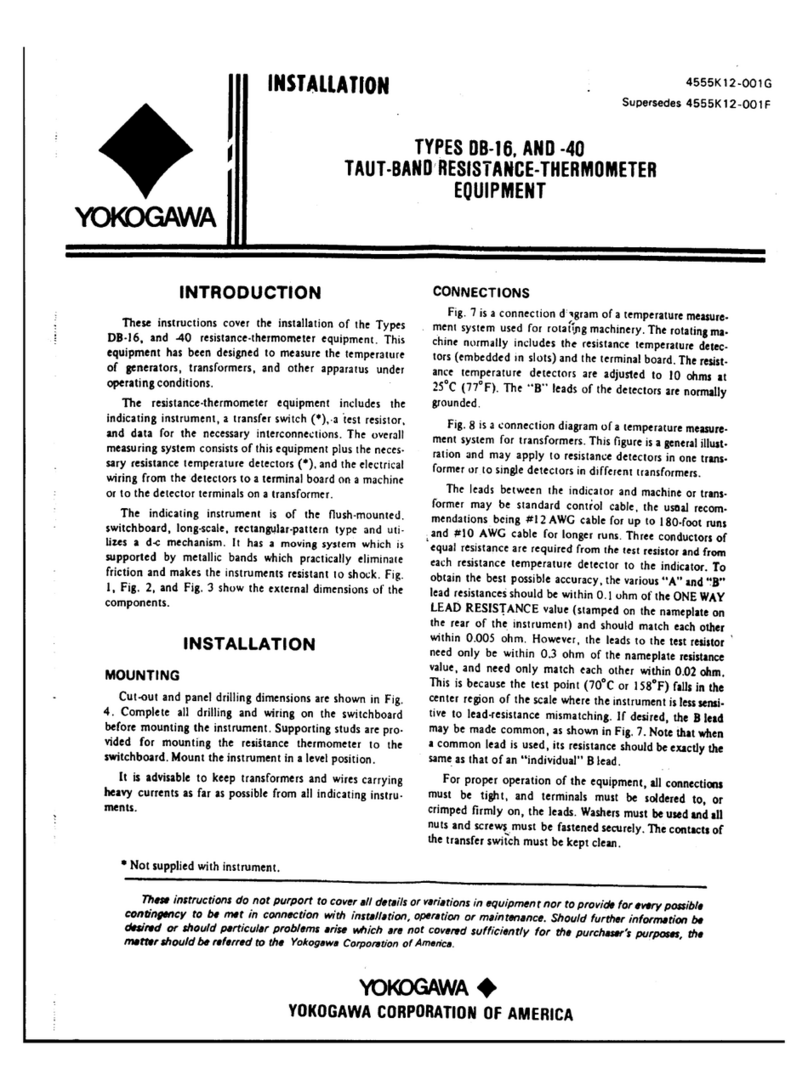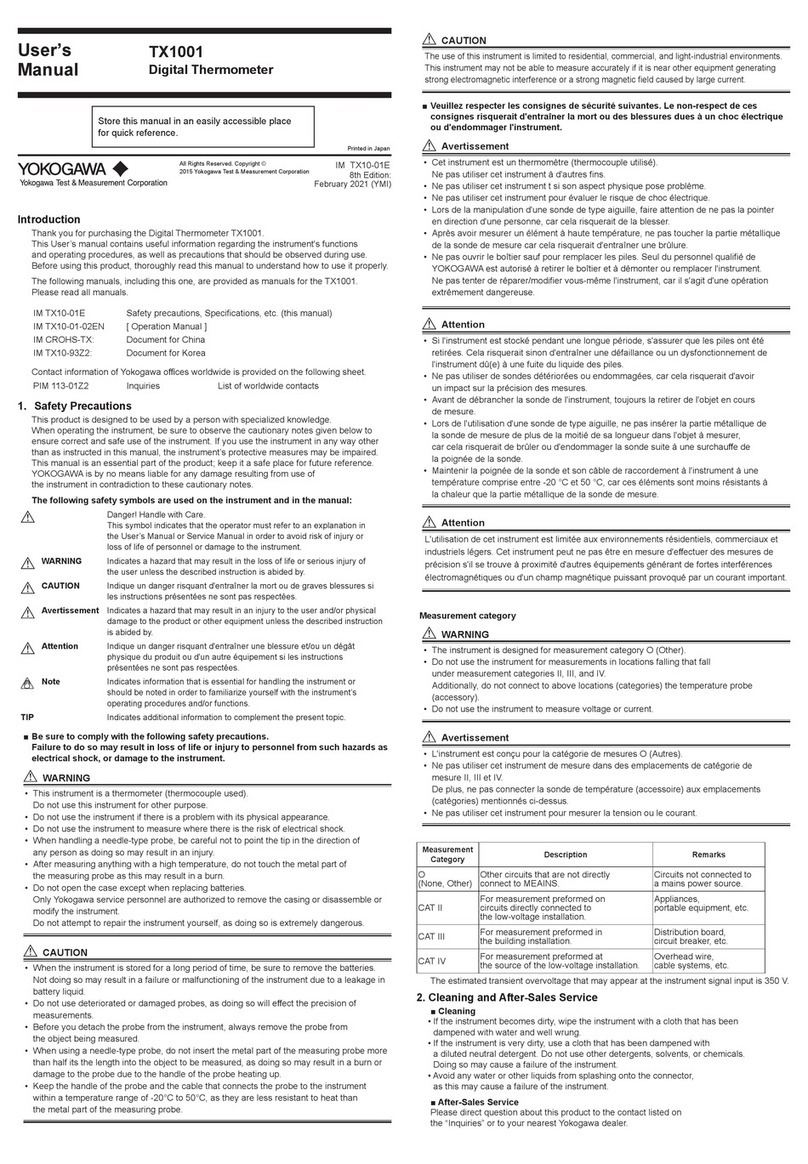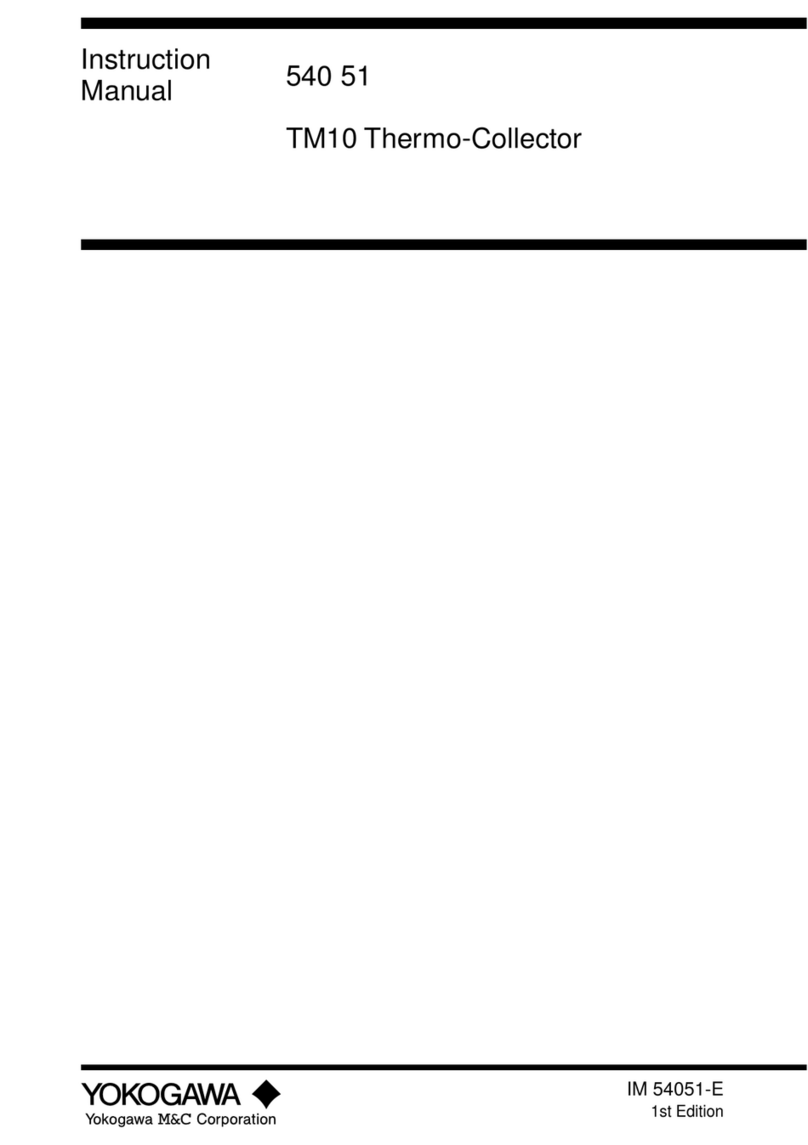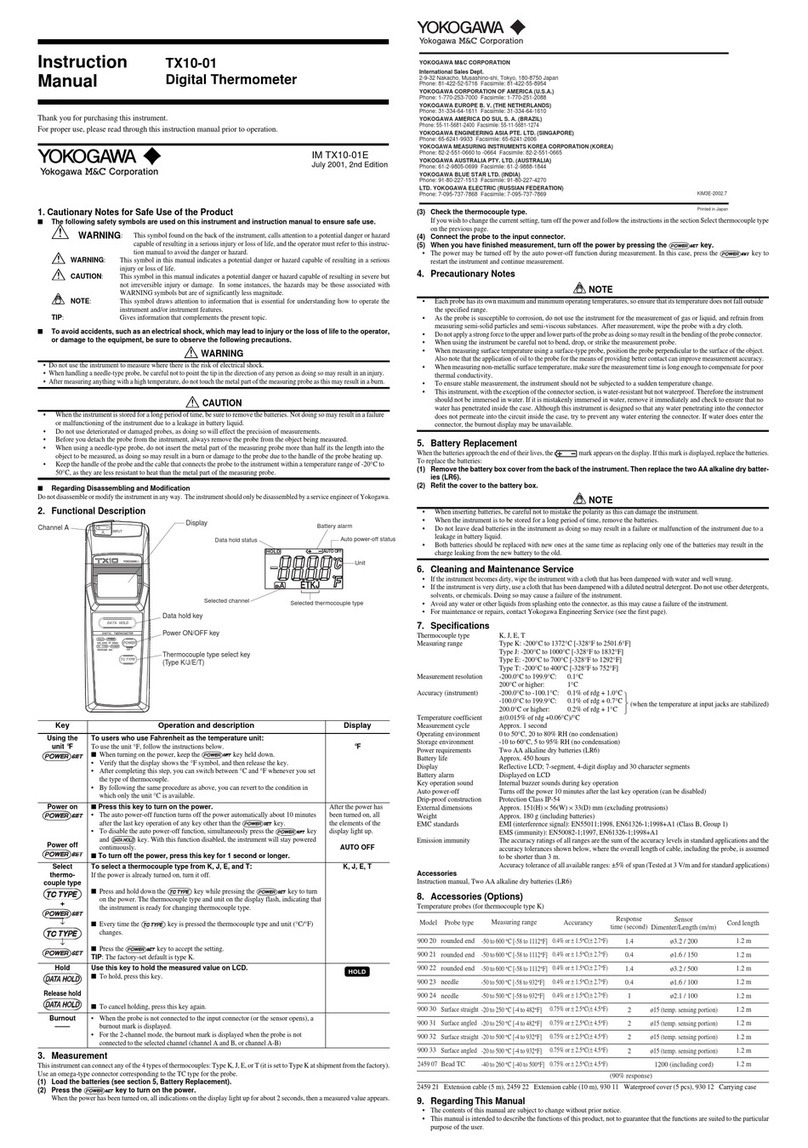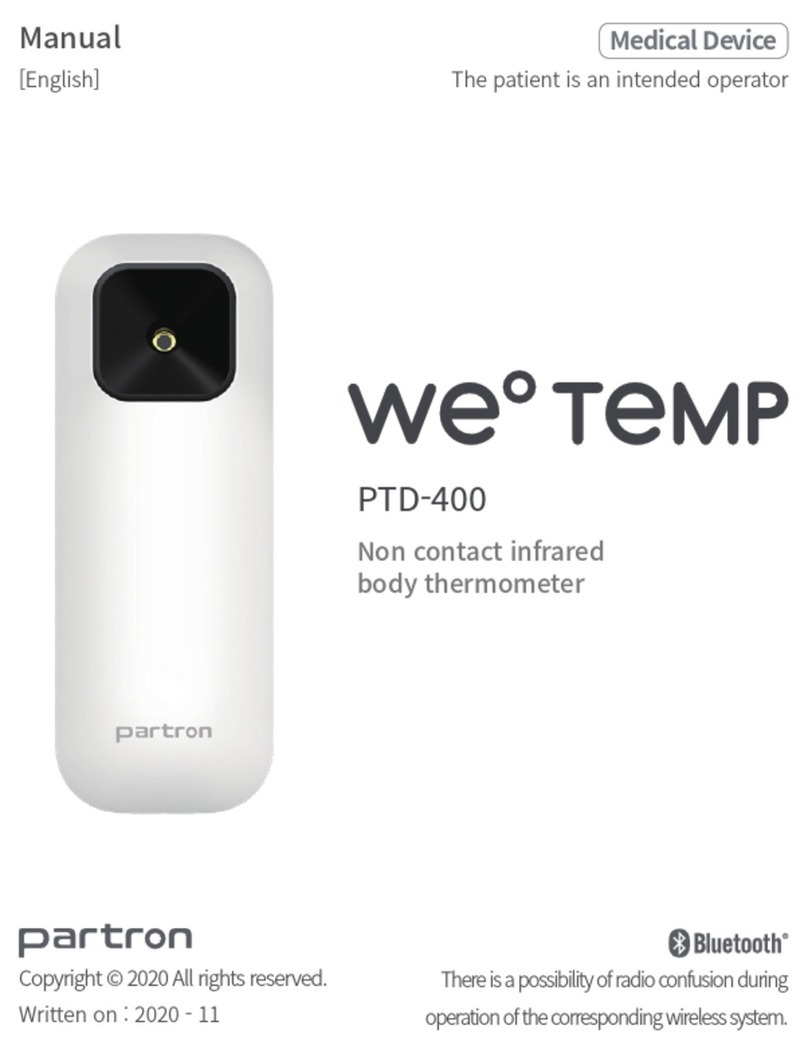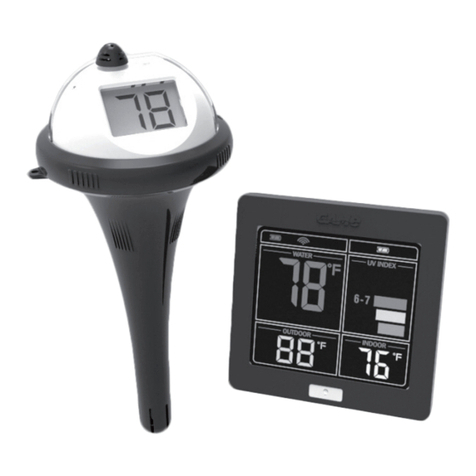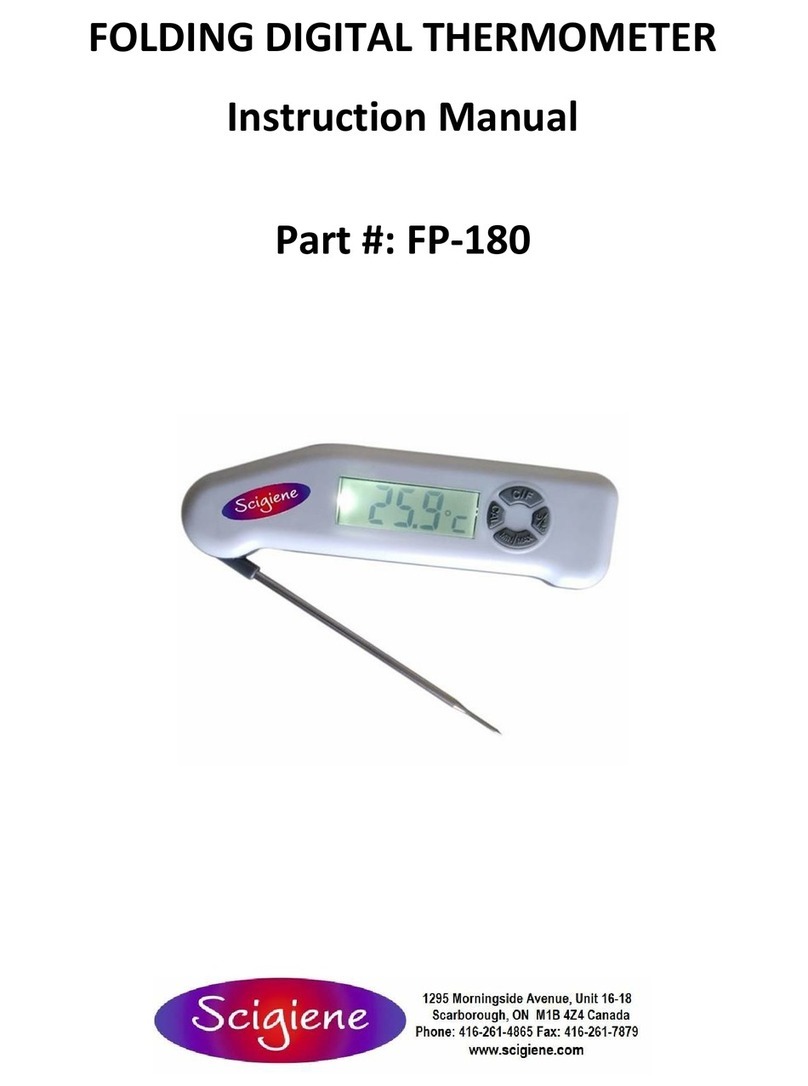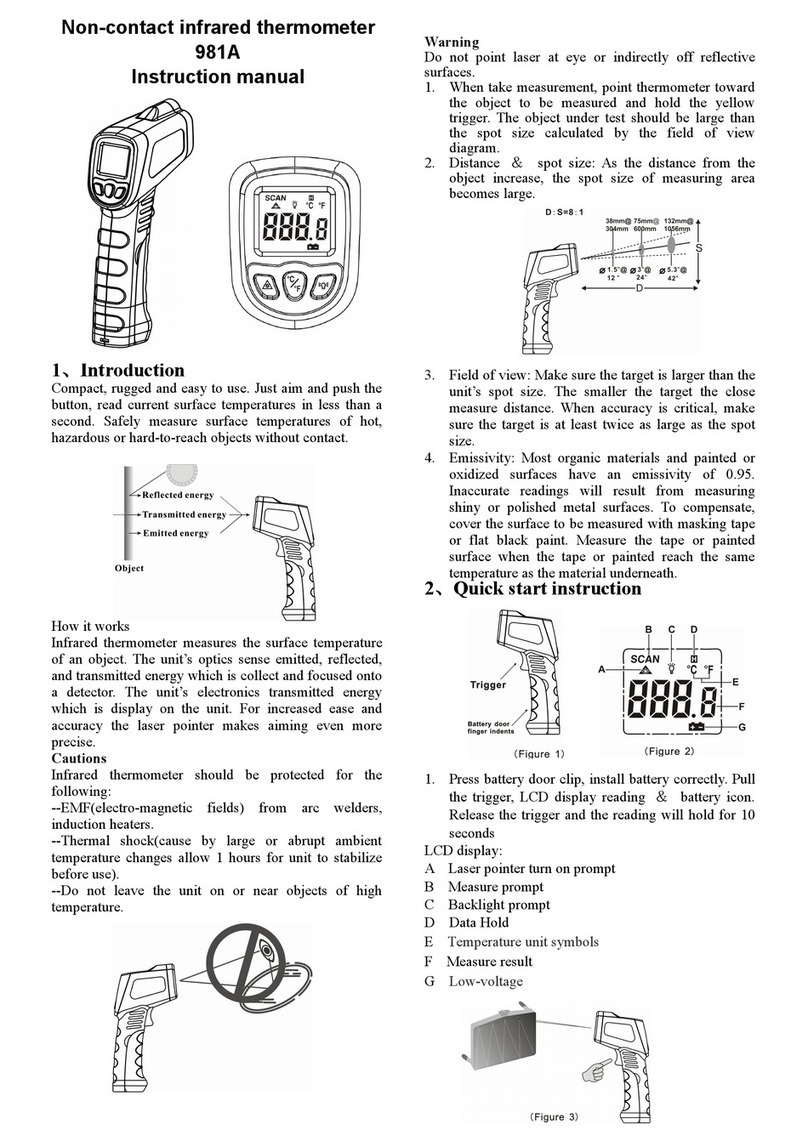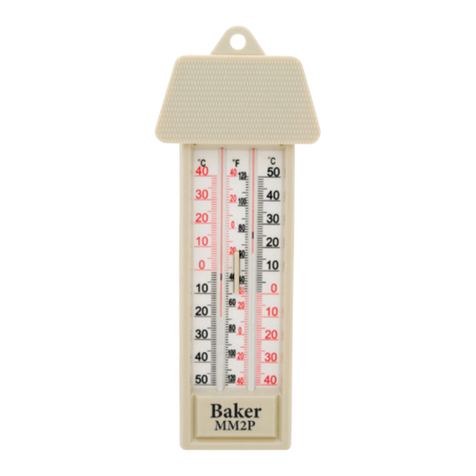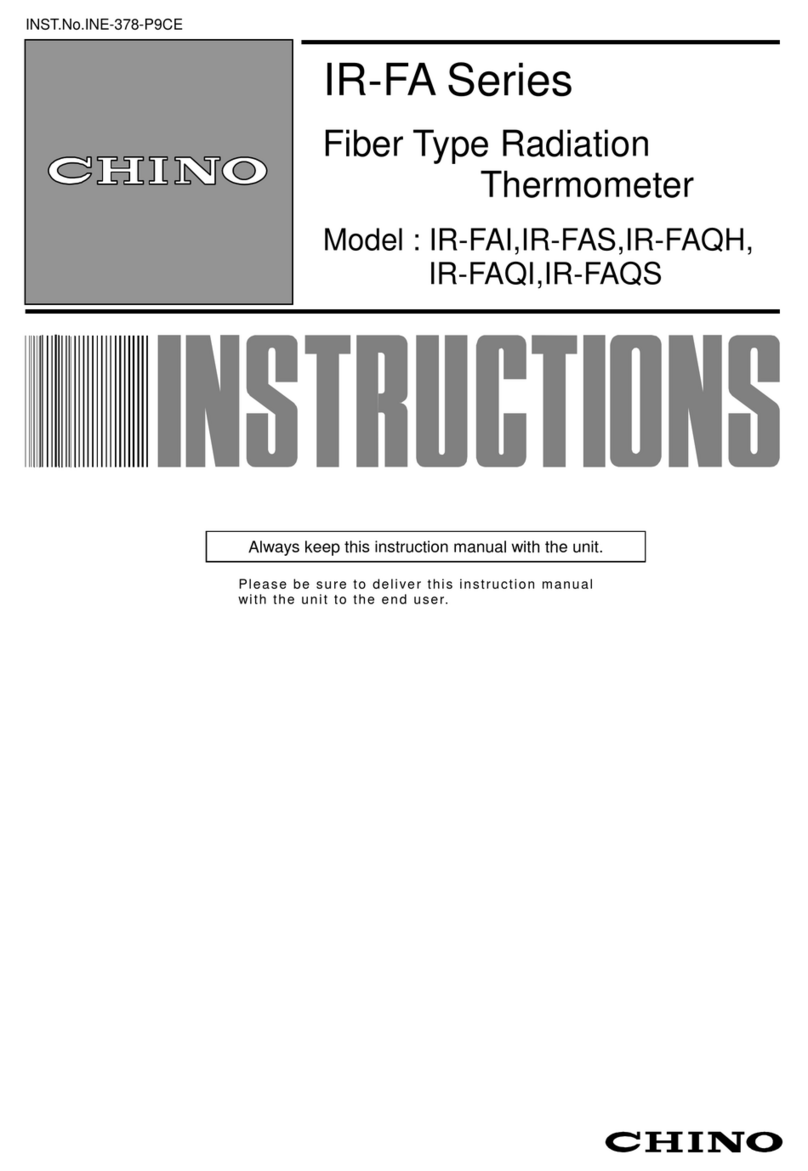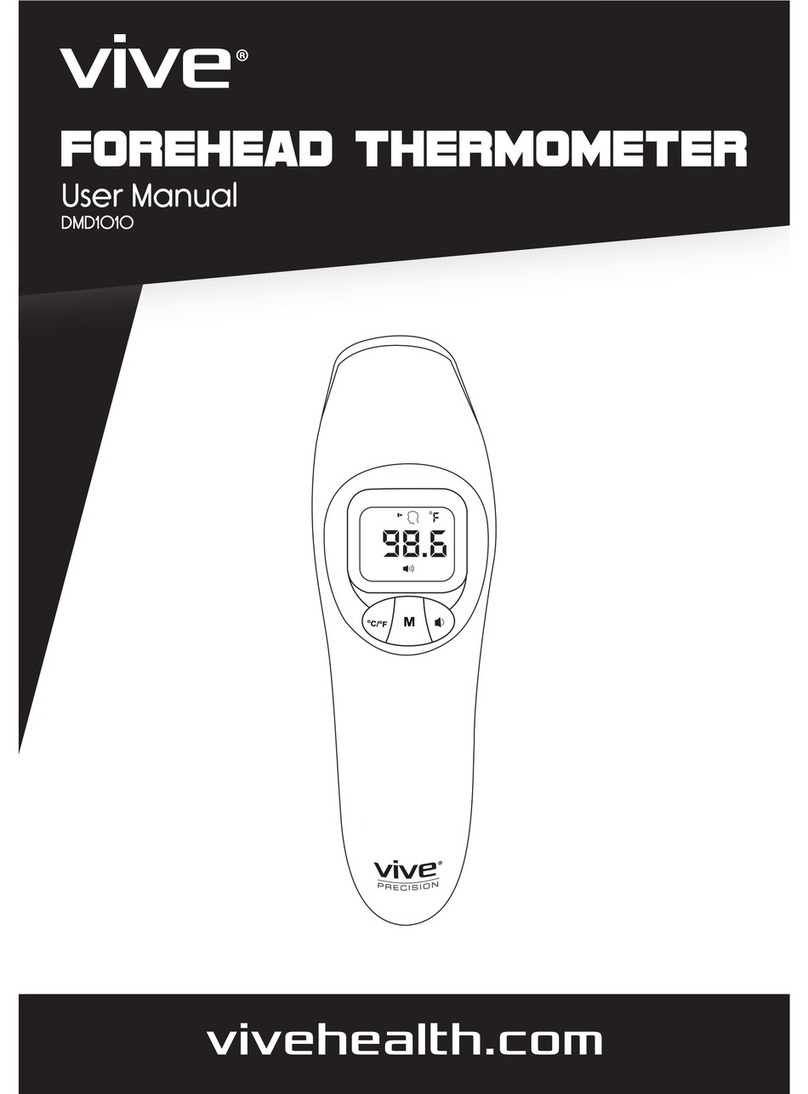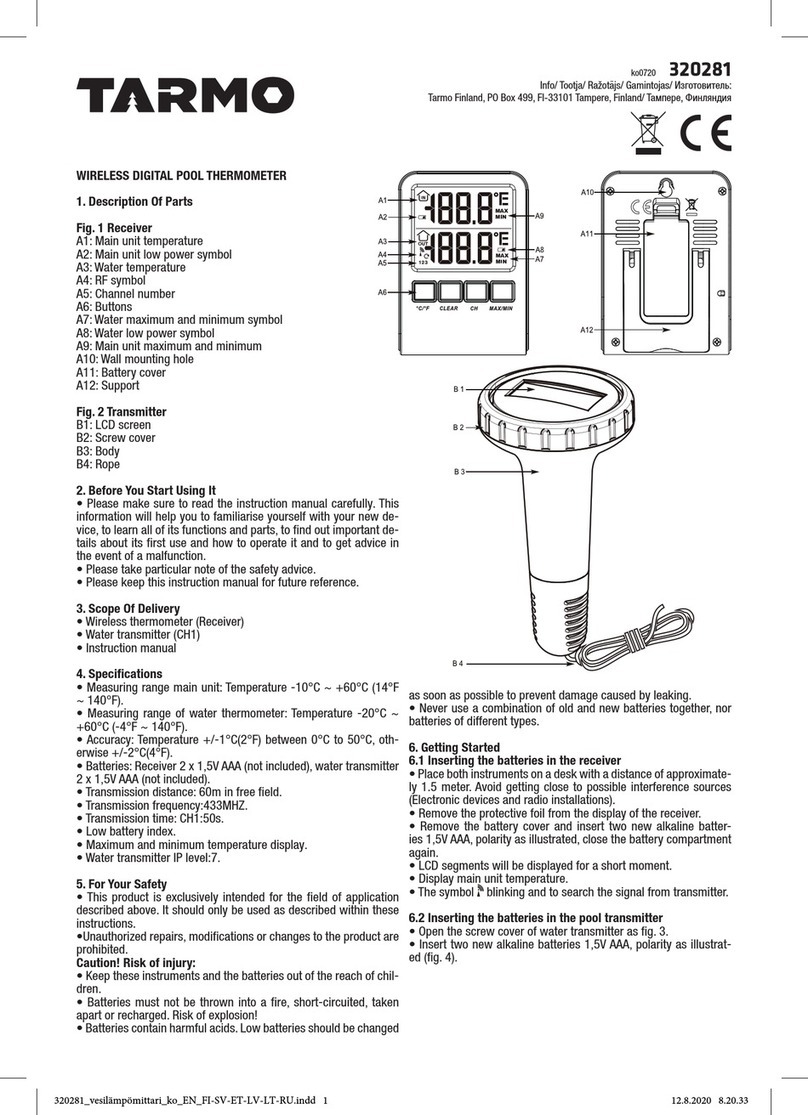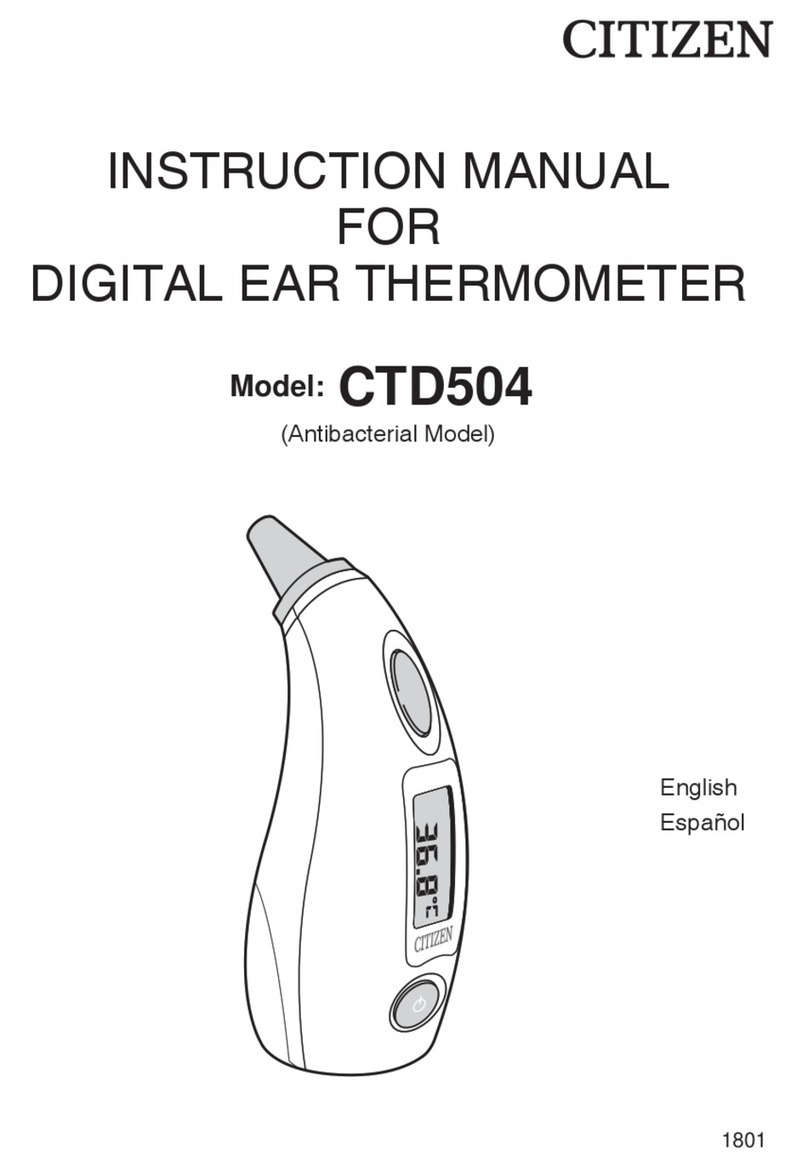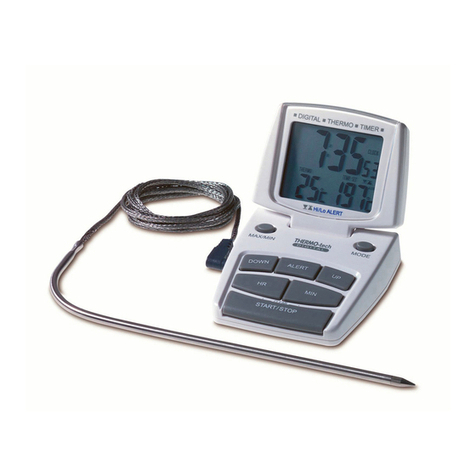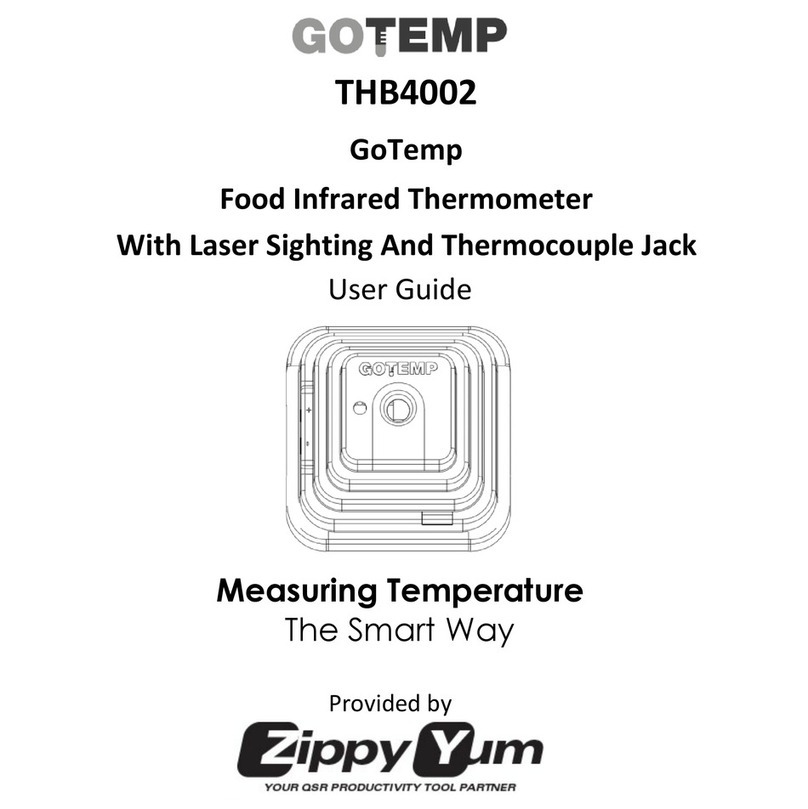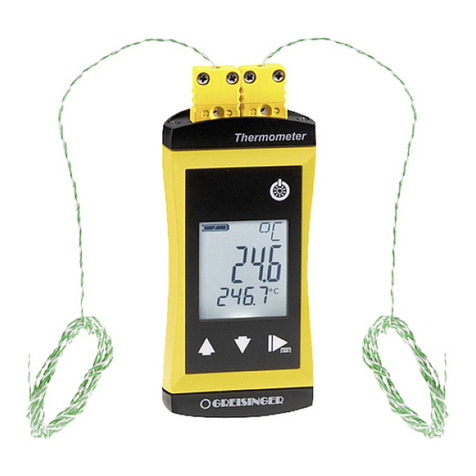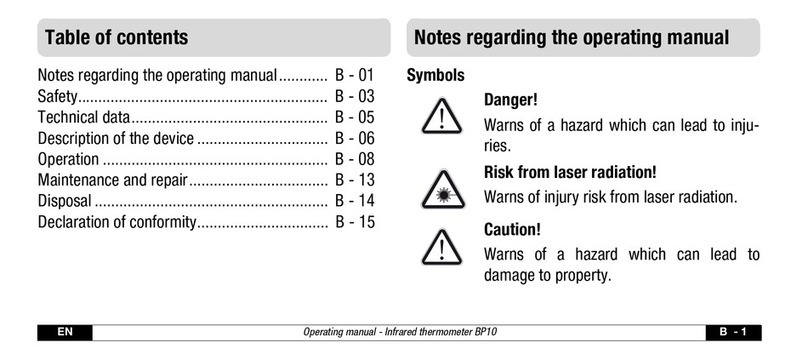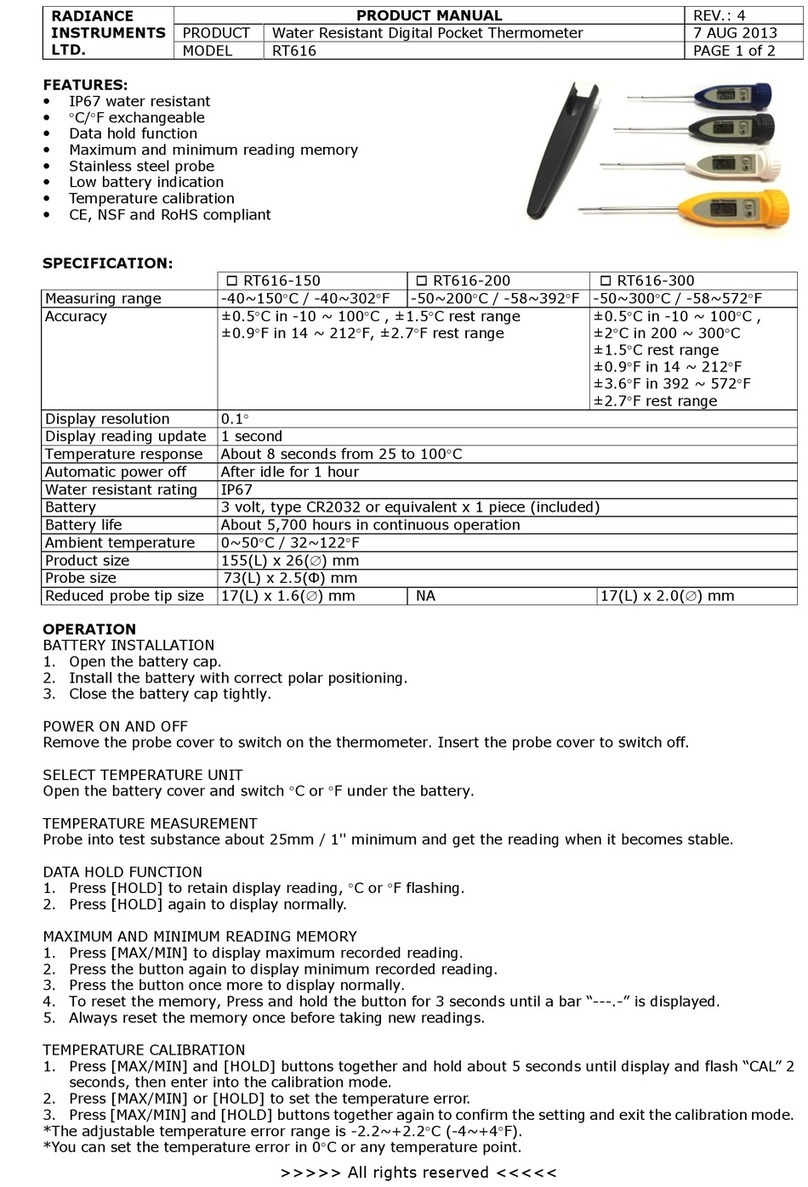Memory-in
↓
↓
↓
To store data in internal memory (maximum of 10 data items):
■Press the key to hold the measured value.
■Press the key.
The display automatically shows the smallest memory number under
which no data has been recorded. At this point, the MEM symbol turns
on to indicate that the thermometer is in the “Memory-in” mode.
■
Use these keys to select a desired memory number under which you want
to record data. In this step, you can also check the existing data value.
TIP:
Pressing the key while a memory number is being displayed
cancels the memory-in function (returns to measurement mode).
■Press the key to store the data.
TIP:The HOLD and
MEM
symbols indicate that the value recorded
with the memory-in function is being held and shown. Press the
key to return to normal measurement mode.
HOLD
MEM
Read
maximum
and minimum
values
Read
stored data
↓
To read maximum and minimum values and stored data
values from memory:
■When the key is pressed, the display changes
in the sequence shown in the figure on the right.
■For stored data, select the memory number using the
or key. After the memory number has been
displayed for a few seconds, the value stored in that
memory is displayed.
NOTE:
•This data reading is disabled during thermo-
couple type selecting or correction value setting.
•If you press the key when the REL mode
is active, each of the MIN, MAX and MEM
values is shown as a relative value based on the
reference value (D1).
•The number of display digits of maximum and minimum/stored
data depends on the current resolution setting, not the number of
display digits at the time when the data was measured.
Channel switching and display when data is being read (TX10-
03 only):
■
Data while measuring values from a single channel (either channel A or B)
Using the
key and select one channel from channel A, B, and A-B (see Select channel on the previous
page).
(5) Connect the probe to the input connector.
If you are using the 2-channel model (TX10-03), connect the probe(s) to the channel(s) you are using.
(6) When you have finished measurement, turn off the power by pressing the key.
•The power may be turned off by the auto power-off function during measurement. In this case, press the
key to restart the instrument and continue measurement.
•If the power is turned off and then on again, the instrument restarts with the same settings of the resolution
(0.1°C or 1°C), input channel (channel A, B or A-B) and thermocouple type (K, J, E or T) as before it was
turned off.
(7) Other operations
For other operations such as display hold, relative display, and maximum and minimum record/readout, see the
key operation list on the previous page.
NOTE
Key operation of this instrument is comparatively easy. However, it is necessary to make sure that the instru-
ment is not mistakenly set to a state other than that intended. Note that, under normal measurement, “HOLD,”
“RCD,” “REL,” “MAX,” “MIN,” and “MEM” are not displayed.
4. Precautionary Notes
NOTE
•Each probe has its own maximum and minimum operating temperatures, so ensure that its temperature does
not fall outside the specified range.
•As the probe is susceptible to corrosion, do not use the instrument for the measurement of gas or liquid, and
refrain from measuring semi-solid particles and semi-viscous substances. After measurement, wipe the
probe with a dry cloth.
•Do not apply a strong force to the upper and lower parts of the probe as doing so may result in the bending
of the probe connector.
• When using the instrument be careful not to bend, drop, or strike the measurement probe.
•When measuring surface temperature using a surface-type probe, position the probe perpendicular to the
surface of the object. Also note that the application of oil to the probe for the means of providing better
contact can improve measurement accuracy.
•When measuring non-metallic surface temperature, make sure the measurement time is long enough to
compensate for poor thermal conductivity.
• To ensure stable measurement, the instrument should not be subjected to a sudden temperature change.
•This instrument, with the exception of the connector section, is water-resistant but not waterproof. There-
fore the instrument should not be immersed in water. If it is mistakenly immersed in water, remove it
immediately and check to ensure that no water has penetrated inside the case. Although this instrument is
designed so that any water penetrating into the connector does not permeate into the circuit inside the case,
try to prevent any water entering the connector. If water does enter the connector, the burnout display may
be unavailable.
5. Battery Replacement
When the batteries approach the end of their lives, the mark appears on the display. If this mark is displayed,
replace the batteries.
To replace the batteries:
(1) Remove the battery box cover from the back of the instrument. Then replace the two AA alkaline dry batteries
(LR6).
(2) Refit the cover to the battery box.
NOTE
• When inserting batteries, be careful not to mistake the polarity as this can damage the instrument.
•When the instrument is to be stored for a long period of time, remove the batteries.
•Do not leave dead batteries in the instrument as doing so may result in a failure or malfunction of the
instrument due to a leakage in battery liquid.
•Both batteries should be replaced with new ones at the same time as replacing only one of the batteries may
result in the charge leaking from the new battery to the old.
6. Cleaning
•
If the instrument becomes dirty, wipe the instrument with a cloth that has been dampened with water and well wrung.
•If the instrument is very dirty, use a cloth that has been dampened with a diluted neutral detergent. Do not use
other detergents, solvents, or chemicals. Doing so may cause a failure of the instrument.
•
Avoid any water or other liquids from splashing onto the connector, as this may cause a failure of the instrument.
7. Maintenance Service
For maintenance or repairs, contact Yokogawa Engineering Service (see the first page).
8. Specifications
Performance Specifications
Thermocouple type K, J, E, T
Measurement channels 1ch or 2ch (2ch, multi-function model only)
Measuring range Type K: -200°C to 1372°C [-328°F to 2501.6°F]
Type J: -200°C to 1000°C [-328°F to 1832°F]
Type E: -200°C to 700°C [-328°F to 1292°F]
Type T: -200°C to 400°C [-328°F to 752°F]
Measurement resolution -200.0°C to 199.9°C: 0.1°C or 1°C (when 1°C resolution is set)
200°C or higher: 1°C
Accuracy (instrument) -200.0°C to -100.1°C: 0.1% of rdg + 1.0°C
-100.0°C to 199.9°C: 0.1% of rdg + 0.7°C
200°C or higher, or when 1°C resolution is set: 0.2% of rdg + 1°C
Temperature coefficient ±(0.015% of rdg +0.06°C)/°C
Measurement cycle Approx. 1 second (1ch model; 2ch model when performing 1ch measurement)
Approx. 2 seconds (2ch model when performing 2ch measurement; with no
range switching)
Operating environment 0°C to 50°C, 20 to 80% RH (no condensation)
Storage environment -10°C to 60°C, 5 to 95% RH (no condensation)
Power requirements Two AA alkaline dry batteries (LR6)
Battery life Approx. 450 hours
General Functions
Display Reflective LCD; 7-segment, 4-digit display and 30 character segments
Computing function MAX/MIN, REL
Difference between 2 channels (2ch model only)
Battery alarm Displayed on LCD
Key operation sound Internal buzzer sounds during key operation
Auto power-off Turns off the power 10 minutes after the last key operation (can be disabled)
Range hold function Controls the range switching between -200.0°C to 199.9°C (0.1°C resolution),
and 200°C or higher (1°C resolution).
Simple memory function Stores up to 10 data items in memory. Displays memory number and stored data
value.
Drip-proof construction Protection Class IP-54
Simplified correction function Based on the reference value entered manually
Dimensions and Weight
External dimensions Approx. 151(H) ×56(W) ×33(D) mm (excluding protrusions)
Weight Approx. 180 g (including batteries)
Compliance with Standards
EMC standards EMI (interference signal): EN55011;1998,
EN61326-1;1998+A1 (Class B, Group 1)
EMS (immunity): EN50082-1;1997,
EN61326-1;1998+A1
Emission immunity The accuracy ratings of all ranges are the sum of the accuracy levels in standard
applications and the accuracy tolerances shown below, where the overall length
of cable, including the probe, is assumed to be shorter than 3 m.
Accuracy tolerance of all available ranges: ±5% of span (Tested at 3 V/m and
for standard applications)
Accessories
Instruction manual
Two AA alkaline dry batteries (LR6)
9. Accessories (Optional)
Temperature probes (for thermocouple type K)
Model Probe type Measuring Accuracy Response Sensor Cord
range time (second) Dimenter/Length (m/m) length
900 20 rounded end -50 to 600°C 0.4% or ±1.5°C 1.4 ø3.2 / 200 1.2m
[-58 to 1112°F] (±2.7°F)
900 21 rounded end -50 to 600°C 0.4% or ±1.5°C 0.4 ø1.6 / 150 1.2m
[-58 to 1112°F] (±2.7°F)
900 22 rounded end -50 to 600°C 0.4% or ±1.5°C 1.4 ø3.2 / 500 1.2m
[-58 to 1112°F] (±2.7°F)
900 23 needle -50 to 500°C 0.4% or ±1.5°C 0.4 ø1.6 / 100 1.2m
[-58 to 932°F] (±2.7°F)
900 24 needle -50 to 500°C 0.4% or ±1.5°C1 ø2.1 / 100 1.2m
[-58 to 932°F] (±2.7°F)
900 30 Surface -20 to 250°C 0.75% or ±2.5°C2 ø15 1.2m
straight [-4 to 482°F] (±4.5°F) (temp. sensing portion)
900 31 Surface -20 to 250°C 0.75% or ±2.5°C2 ø15 1.2m
angled [-4 to 482°F] (±4.5°F) (temp. sensing portion)
900 32 Surface -20 to 500°C 0.75% or ±2.5°C2 ø15 1.2m
straight [-4 to 932°F] (±4.5°F) (temp. sensing portion)
900 33 Surface -20 to 500°C 0.75% or ±2.5°C2 ø15 1.2m
angled [-4 to 932°F] (±4.5°F) (temp. sensing portion)
2459 07 Bead TC -40 to 260°C 0.75% or ±2.5°C 1200 1.2m
[-40 to 500°F] (±4.5°F) (included cord)
2459 21 Extension cable (5 m) (90% response) * JIS: Japan Industrial Standard
2459 22 Extension cable (10 m)
930 11 Waterproof cover (5 pcs)
930 12 Carrying case
10.RegardingThis Manual
• The contents of this manual are subject to change without prior notice.
•This manual is intended to describe the functions of this instrument, not to guarantee that the functions are
suited to the particular purpose of the user.
NOTE:
• The maximum and minimum values are stored in internal memory
even after recording is cancelled. The data will be updated when
the RCD mode is enabled again.
•
If you enable the RCD mode when the REL mode is active, the
reading changes to a relative value. Nevertheless, the minimum and
maximum of measured values (Dx) are stored in internal memory.
•Recorded maximum and minimum values can be referenced even
after the power is turned off and on again because they are stored
in memory until the RCD mode is enabled next time.
•Auto power-off is cancelled during the RCD mode.
Maximum value
Stored value
Minimum value
Measured value
MAX
MEM
MIN
▼
▼
Memory number selection
chA(or chB
or chA-chB)
Source input channel
of the recorded data
